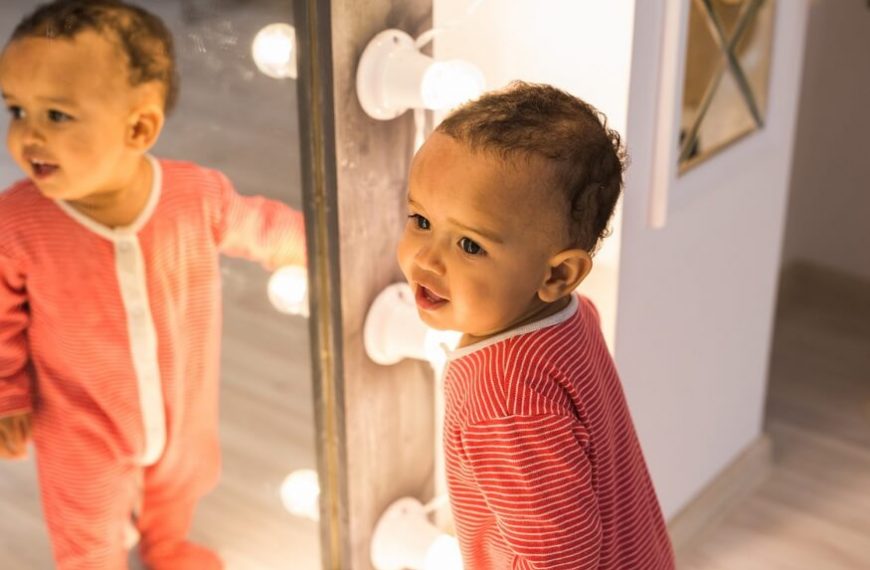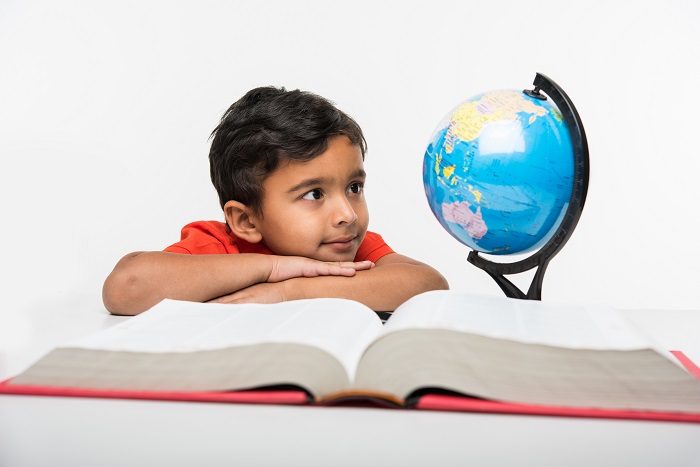Unlocking Baby Development: Benefits of Mirrors for Growth
Baby Mirror is not just a tool for vanity; they also have incredible benefits for babies’ development. As young parents, you may be surprised that a baby mirror can be essential to your little one’s growth and learning process. This blog post will explore how baby mirrors can benefit babies and why they should be incorporated into their environment. Let’s dive in!
Why do babies like mirrors
- Visual Stimulation: mirrors for babies provide them with captivating visual stimulation. As they observe their reflections, they develop a sense of self-awareness. The bright and shiny surface of a mirror attracts their attention. It encourages them to focus on their movements and facial expressions. This visual Stimulation helps promote cognitive development and strengthens their ability to track objects.
- Body Awareness: Looking into a mirror helps babies develop a sense of their bodies. They become familiar with their facial features, limbs, and body movements. By observing their reflections, they can understand cause and effect as they move their arms or legs and see those movements replicated in the mirrors for babies. This enhances their spatial awareness and promotes motor skill development.
- Social and Emotional Development: Mirrors for babies can also significantly affect a baby’s social and emotional development. They often smile, coo, and engage in self-directed play when they see their reflections. This interaction with their mirror image helps babies develop a positive self-image, boosts self-esteem, and lays the foundation for healthy social interactions with others.
- Language Development: Babies are naturally drawn to faces, and mirrors allow them to observe and interact with a familiar face—one reason why babies like mirrors. They unknowingly practice critical pre-linguistic skills as they babble, coo, and make sounds while looking into the mirror. Mirrors can serve as a tool for parents to engage in conversations, label body parts, and encourage early language development.
Why is mirror play important for infants?
- Visual Tracking and Object Permanence: When babies see their reflections in a mirror, they learn to track moving objects visually – making it provident – why is mirror play important for infants? This skill is crucial for their cognitive development and later helps them in activities such as reading and writing. Additionally, mirrors assist in understanding object permanence—the understanding that objects continue to exist even when they are out of sight. By observing themselves and realizing that the reflection disappears when they turn away, babies begin to grasp this concept.
- Sensory Exploration: Mirrors offer a multi-sensory experience for babies. They can touch the smooth surface, observe their reflections, and experiment with different facial expressions. This sensory exploration stimulates their cognitive development, enhances their fine motor skills, and fosters their curiosity and creativity.
- Self-Recognition and Identity: As babies age, they begin to recognize themselves in mirrors. Around 18 months, they may start pointing to themselves or referring to their reflections as “me” or their name. This self-recognition is an essential milestone in their emotional and cognitive development, as it signifies the beginning of understanding their identity and individuality.
Tips for Using Mirrors with Babies:
- Place a child-safe, unbreakable mirror at your baby’s eye level in their play area.
- Encourage your baby to interact with their reflection by smiling, talking, and making funny faces.
- Incorporate mirrors into tummy time sessions to encourage head lifting and promote neck and upper body strength.
- Sing songs or read books with your baby while looking into the mirror, pointing out body parts, or making animal sounds together.
When allowing kids to have mirror play, ensuring their safety is essential. Here are some precautions to take when kids are using mirrors:
- Choose a child-safe mirror: For mirror play, opt for mirrors specifically designed for children, as they are usually made from shatterproof materials and have rounded edges to minimize the risk of injury.
- Secure the mirror: Ensure that the mirror is securely mounted or placed in a stable position. Avoid using adhesive-backed mirrors that can easily be pulled down or knocked over by curious hands.
- Position the mirror at an appropriate height: Place the mirror at a size suitable for your child’s age and developmental stage. It should be easily accessible, allowing them to view their reflection without climbing or stretching.
- Regularly inspect the mirror: Check the mirror regularly for any cracks, loose parts, or damage that could pose a safety risk. If you notice any issues, replace or repair the mirror promptly.
- Supervise young children: For babies and toddlers, it’s important to supervise their mirror interactions to prevent them from getting too close, licking the mirror, or misusing it. Monitor them to ensure they use the mirror safely and appropriately.
- Use child-friendly cleaning products: When cleaning the mirror, use non-toxic and child-friendly cleaning products to ensure no harmful chemicals are left on the surface. Avoid using harsh cleaning agents that could be ingested or irritate your child’s skin or eyes.
- Teach mirror safety: Educate your child about mirror safety. Teach them not to lean or push too hard against the mirror, as it can lead to accidents or breakage. Explain that mirrors are delicate and should be treated with care.
- Ensure proper lighting: Adequate lighting is essential when using mirrors, allowing children to see their reflections. Ensure that the area around the mirror is well-lit, avoiding shadows that could cause visual confusion or discomfort.
- Be mindful of distractions: Avoid placing mirrors in areas with potential distractions, such as near busy walkways or within reach of objects that could be knocked into the mirror. Minimize any potential hazards that could result in accidents or damage to the mirror.
- Set boundaries: Teach your child about appropriate mirror use. Please encourage them to focus on observing their reflection rather than engaging in rough play or touching the mirror excessively. Establishing boundaries ensures their safety and prevents unnecessary damage to the mirror.
By taking these precautions, you can create a safe environment for your child to enjoy the benefits of using mirrors while minimizing potential risks.
Conclusion
Mirrors provide babies numerous benefits, from visual Stimulation and body awareness to social development and language skills. Incorporating mirrors into your baby’s environment can be a simple yet powerful way to support their growth and learning. So, embrace the magic of mirrors and watch as your little one explores their reflection, develops self-awareness, and takes essential steps on their developmental journey.
















